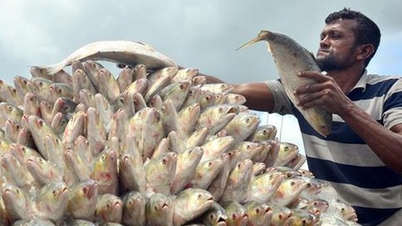A mystery that has challenged paleontologists for more than a century has finally been partially solved when Palaeospondylus, a tiny fish previously known only from fossils in Scotland, was discovered in a completely new location - Western Australia.
This discovery not only expands the geographical distribution range, but also pushes back the existence of this ancient creature by about 10 million years, becoming a major turning point in the journey to decipher the evolutionary history of vertebrates.
First recorded in 1890, Palaeospondylus was just a few centimeters long, had a slender, eel-like body, and joints so bizarre that despite collecting more than 1,000 specimens, scientists have been unable to convincingly place it in any biological group.
Over the past 130 years, the fish has been the subject of speculation about its origins, from jawless fish to lobe-finned fish larvae to the ancestors of tetrapods. Yet its exact place in the evolutionary tree of animals remains a mystery.
The turning point came when a group of Chinese and Australian scientists, from the Institute of Vertebrate Paleontology and Anthropology (IVPP) - Chinese Academy of Sciences, discovered the Palaeospondylus fossil in the Cravens Peak Beds area, in the Georgina Basin, Queensland (Australia).
The geological layer containing the Palaeospondylus fossil dates from the Early Devonian (Emsian) period - dating back about 400 million years.
Remarkably, this geological layer also contains fossils of jawless fish, ironclads, primitive sharks and a wide variety of bony fish, suggesting an extremely rich ancient marine environment.
Although the fossil fragments were quite fragmentary, thanks to high-resolution CT techniques combined with 3D reconstruction technology, the research team was able to reconstruct the entire brain skull - including the semicircular canals and neural canals, key structures for locating the evolutionary branch of a vertebrate species.
Morphological and phylogenetic analyses indicate that Palaeospondylus was most likely an ancient ancestor of cartilaginous fish (like modern sharks and rays)—rather than a link in the evolutionary lineage to limbed fish, as previously assumed.
"We have fully reconstructed the braincase of Palaeospondylus for the first time and identified key evolutionary features," said Lu Jing, the study's lead author. "This is a breakthrough in our understanding of Palaeospondylus and refutes several false hypotheses that have existed for decades."
Not stopping there, the research team also developed a completely new volumetric data reconstruction method, allowing for efficient cross-validation of fossil morphology between platforms. This technique promises to revolutionize the processing and analysis of CT data in paleontology, contributing to the creation of a standard process for sharing and testing results in the archaeological industry./.
Source: https://www.vietnamplus.vn/buoc-ngoat-lon-trong-viec-giai-ma-lich-su-tien-hoa-cua-dong-vat-co-xuong-song-post1037755.vnp




![[Photo] Prime Minister Pham Minh Chinh chairs the Government's online conference with localities](https://vphoto.vietnam.vn/thumb/1200x675/vietnam/resource/IMAGE/2025/10/5/264793cfb4404c63a701d235ff43e1bd)


![[Photo] Prime Minister Pham Minh Chinh launched a peak emulation campaign to achieve achievements in celebration of the 14th National Party Congress](https://vphoto.vietnam.vn/thumb/1200x675/vietnam/resource/IMAGE/2025/10/5/8869ec5cdbc740f58fbf2ae73f065076)












































![[VIDEO] Summary of Petrovietnam's 50th Anniversary Ceremony](https://vphoto.vietnam.vn/thumb/402x226/vietnam/resource/IMAGE/2025/10/4/abe133bdb8114793a16d4fe3e5bd0f12)

![[VIDEO] GENERAL SECRETARY TO LAM AWARDS PETROVIETNAM 8 GOLDEN WORDS: "PIONEER - EXCELLENT - SUSTAINABLE - GLOBAL"](https://vphoto.vietnam.vn/thumb/402x226/vietnam/resource/IMAGE/2025/7/23/c2fdb48863e846cfa9fb8e6ea9cf44e7)





































Comment (0)